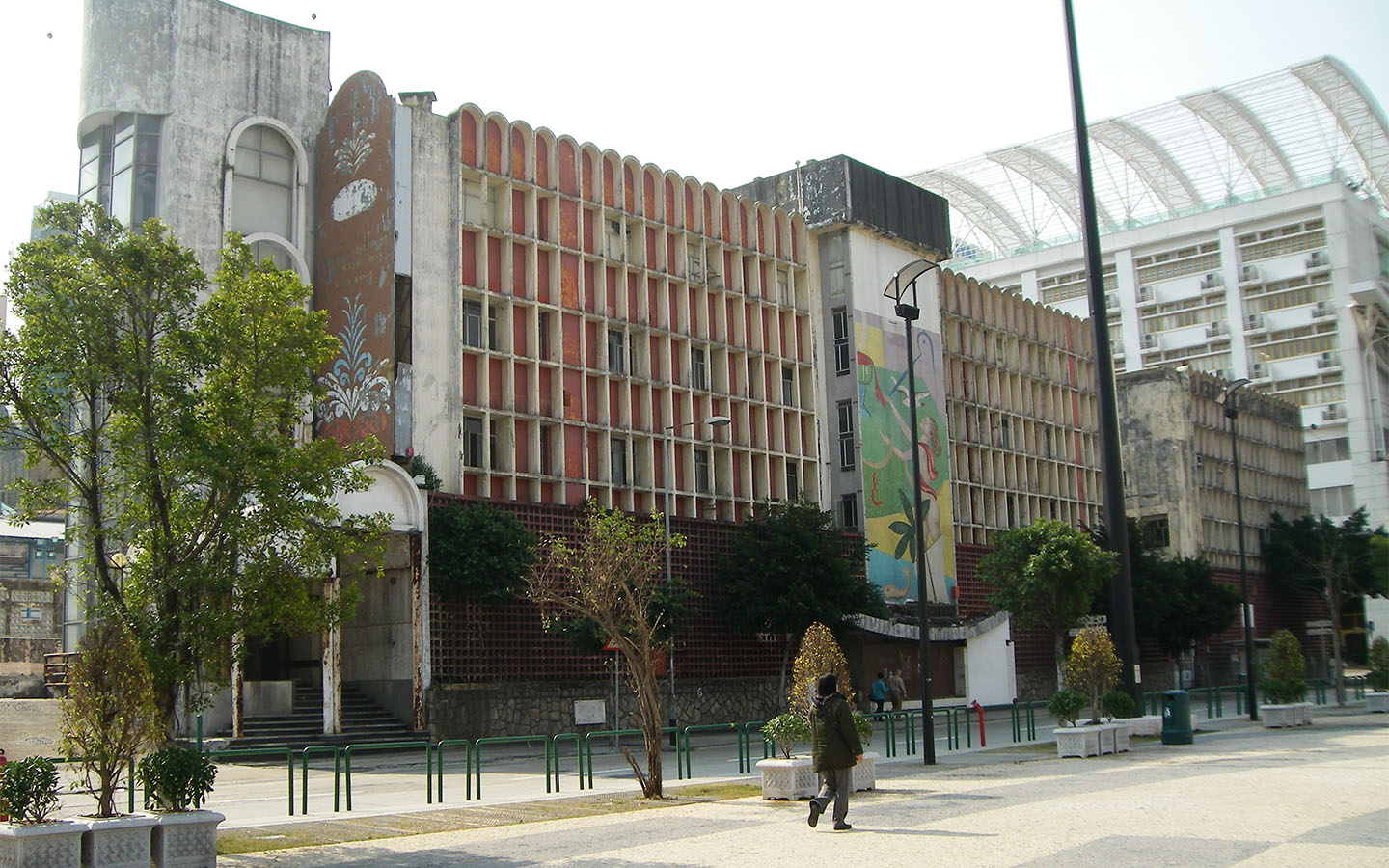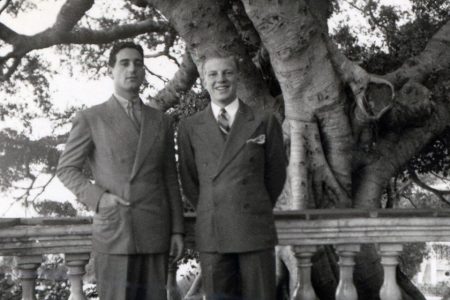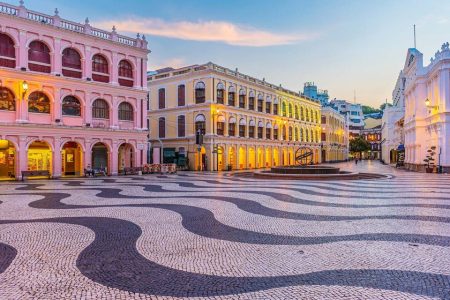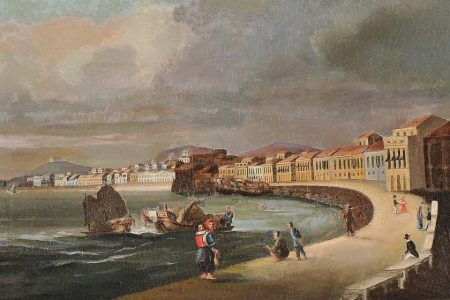In the coming months, the building that was once Macao’s famed Hotel Estoril will be no more, with the authorities demolishing the structure to make room for the new four-storey, 15,000-square-metre Central Library.
While the building’s days are numbered, the Hotel Estoril will continue to live on through the Central Library’s design. Mecanoo, the Dutch architectural firm working on the library, stated in a Macao magazine report that it planned to retain the same exterior colour scheme as Hotel Estoril.
[See more: The first phase of Macao’s new Central Library will be finished next December]
“If we use other colours, such as red and yellow, the library becomes another presence and something else,” said Nuno Fontarra, an architect with the company. “Using the same colour as the [hotel] building gives it continuity. You will still remember what was there before.” In addition, the hotel’s iconic mosaic mural of the Roman goddess Fortuna will be preserved in the lobby of the new library.
As the final page is being written in the history of Hotel Estoril, now is the perfect opportunity to look back at the establishment’s once illustrious past. Here are five things you may not know about Hotel Estoril.
1. It was Stanley Ho’s first casino
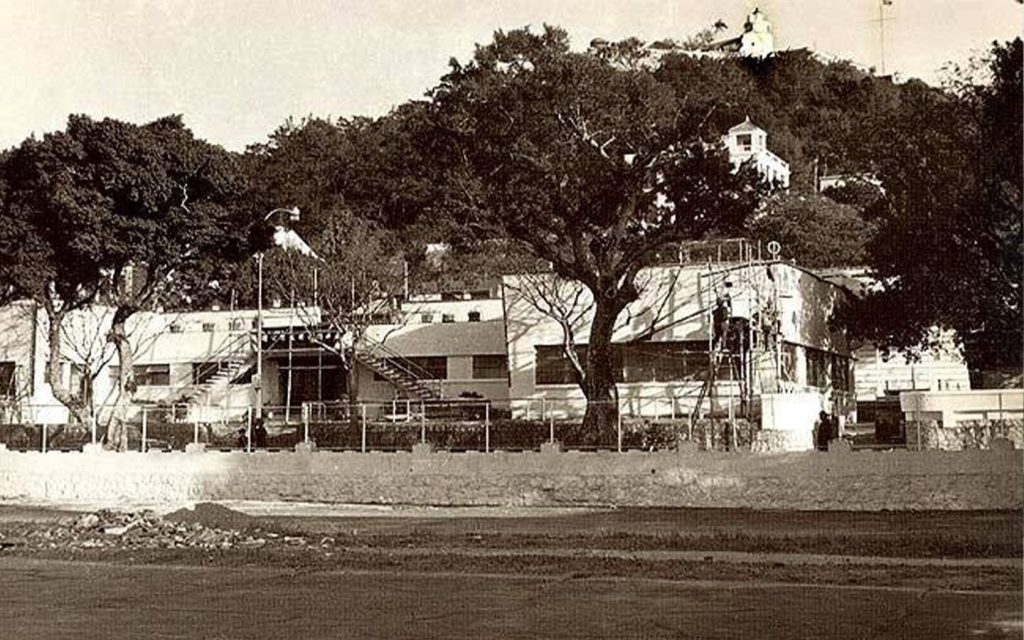
Although the late gaming magnate Stanley Ho made his name with Casino Lisboa, Hotel Estoril was in fact his first foray into Macao’s gaming industry. In 1961, Ho’s company, Sociedade de Turismo e Diversões de Macau (STDM) won the sole gaming concession in the city, establishing the Casino San Fa Yuen (Literally New Flower Garden Casino, 新花園娛樂場) on the site of Hotel Estoril.
Upon its opening on 1 January 1962, Casino San Fa Yuen was hailed as the first casino to have international-standard gaming facilities in the city, with Melody Lu, a University of Macau sociology professor, telling the New York Times that its founding signalled a shift away from the “opium-filed gambling dens” of the past.
Apart from a casino venue that featured Western games such as roulette and poker, the establishment also housed a range of non-gaming facilities, including a luxury restaurant that doubled as a dance hall, as well as the Estoril Swimming Pool whose history dates back to 1952. The Hotel Estoril opened as part of the complex on 15 November 1963.
[See more: A protection plan for Macao’s heritage sites takes effect tomorrow]
The hotel was never intended to be a permanent base of operation for STDM. The government leased the land on which the hotel was built to Ho’s company on a temporary basis to help the fledgling casino operator to get off the ground. By the 1970s, STDM had already established its flagship property, Casino Lisboa, as well as Casino Jai Alai. An agreement was thus made between the government and STDM to shut down Casino San Fa Yuen, while keeping the other venues intact under the management of a different company.
The hotel and its various amenities would continue operating until they began to see a drop in guests in the 1980s, due to their relative distance from the commercial and tourism districts of Macao. By the 1990s, Hotel Estoril ceased operations for good, with its ownership being handed to the Financial Services Bureau. Meanwhile, the Estoril Pool was returned to the government in 1989, and has been operating as a public pool ever since.
2. The hotel’s name reflects Ho’s strong connection to the Portuguese town
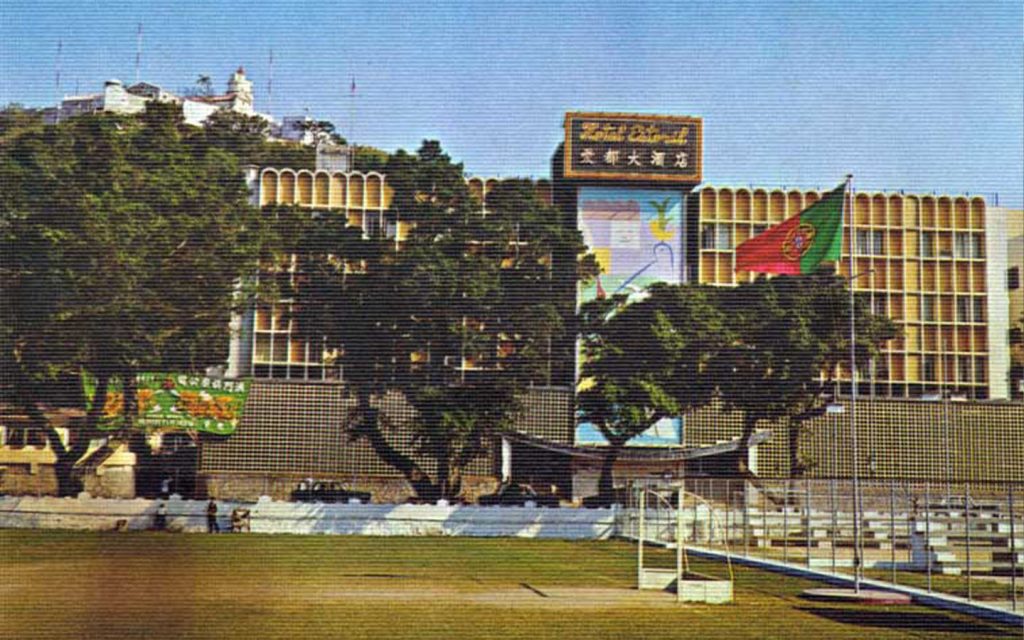
Ho’s decision to name the hotel after the tourist hotspot – located roughly 25 kilometres to the west of Lisbon – stemmed from his love for Portuguese culture. “My friendship with Portugal has its roots in Macao, while my love for Portugal resides in both Cascais and Estoril,” the gambling tycoon was cited as saying in a 2008 Portugal Resident report.
In fact, the late magnate’s company STDM has held the concession for the coastal town’s Casino Estoril, one of the biggest and oldest casinos in Europe, for decades. In 2008, the gambling giant was recognised for his contribution to the Municipality of Cascais, where Estoril is located, by local authorities who named an avenue after him, making him the first living Chinese national to be bestowed this honour in Portugal.
[See more: Hotel Estoril revamp project restructured]
Three years after Ho’s passing in 2020, there were concerns that his family would lose its control of Casino Estoril after a rival Spanish company submitted a higher bid. However, the government ultimately renewed STDM’s contract until 2037.
3. The hotel’s iconic mural was created by the father of Macao pop duo Soler
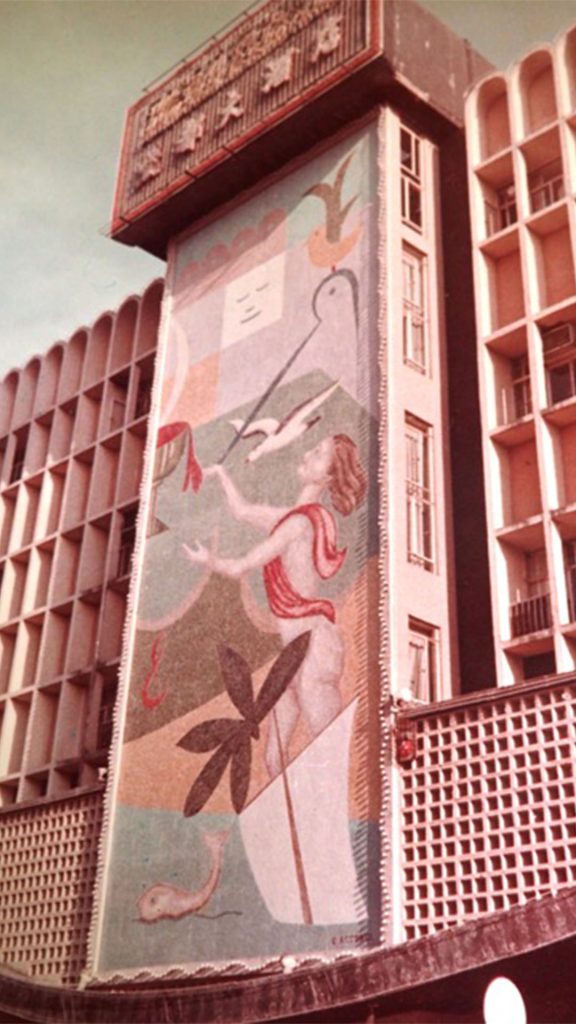
Hotel Estoril’s iconic mosaic mural of the Roman goddess of luck, Fortuna, was created by Oseo Acconci, an Italian architect and sculptor who was based in Macao. He was the father of the twins Giulio and Dino Acconci, who comprise the singing duo known as Soler, one of Macao’s most well-known musical acts.
Born in 1905 to an Italian family of sculptors, Oseo Acconci first moved to Hong Kong in 1936. At the end of that year, he headed over to Shanghai after being recruited by a British firm and would remain in the city for around two years before being transferred to the company’s branch in Hong Kong.
[See more: Macao has listed six new cultural heritage sites]
With the outbreak of World War II in 1939, Acconci found himself on the move once again, relocating to Macao where he maintained a prolific output, helping to design the Saint Francis Xavier’s Church in Mong Ha in 1951, the Church of Our Lady of Sorrows in Ká Hó in 1967 and Our Lady of Fátima Church in 1968. On top of his architectural work, he continued to craft sculptures, some of which have been put on display at the Macau Museum of Art.
One of Acconci’s sons, Arnaldo, described him as “a kind of Renaissance man, skillful in the arts of drawing and sculpture.”
Acconci passed away in 1988, but son Giulio has clearly inherited his father’s talent for the visual arts. The musician is an accomplished artist, sculptor and graphic designer in his own right, having held several exhibitions over the years.
4. The hotel once housed a children’s amusement park
Much like the integrated resorts of today, Hotel Estoril was not simply a casino hotel, but rather an all-encompassing entertainment venue featuring – besides the swimming pool – a nightclub, karaoke bar, and the Sio Sio Amusement Park (小小樂園), which officially opened on 10 October 1962.
Located beside the hotel, the amusement park was an instant hit with families. According to local artist Dixon Lei in the book Macao Storyboard: A Reminiscent Collection, the attraction had various amusement rides that were based on the themes of animals, trains, mermaids and superman.
[See more: Macau urban planners mull alternatives for Hotel Estoril]
Lei also mentioned that there were shooting gallery games and pinball machines. “In those days, you could exchange two tokens with one patacas, which would allow you to stay in the amusement park for several hours to do things, including playing on the machines, learning game secrets and messing around.”
The pinball machines, along with the rest of Sio Sio Amusement Park, however, were ultimately relegated to the history books after Hotel Estoril closed in the late 1990s.
5. The hotel had been mired in controversy following its closure

For many years, the fate of Hotel Estoril was in limbo, with no consensus on whether the building should be demolished or repurposed. In 2015, Alexis Tam, then secretary for culture and social affairs, announced that plans were underway for the government to convert the abandoned structure into a youth recreational and sports venue. However, it proved to be extremely polarising, especially after Tam said that retaining the mosaic of the scantily clad Fortuna would be “inappropriate” given that young people would be using the facility.
The controversy over the mural was not new by any means. “In the first drawing, she [Fortuna] was totally naked,” Arnaldo Acconci, the son of the mural’s creator, said in a Macau Closer interview. “But someone complained,” he recalled, and “our father had to use things like veils and olive leaves to cover her.”
In 2016, the government published the results of a survey in which more than 80 percent of the 2,003 local respondents voiced their support for the redevelopment of the hotel site, although an equally large majority did not know whether the actual building should be torn down or preserved.
[See more: 82.7 percent support Macau government plan for Hotel Estoril]
The Hotel Estoril’s future became so heated that year that the leader of the New Macau Association, Scott Chiang, draped a banner from the roof of the hotel calling Tam a “Cultural Killer.” The protest was broadcast live for several minutes before he and his associates were unceremoniously arrested by law enforcement.
Eventually, the government scrapped its youth centre plan in favour of a new proposal to demolish the hotel and build the new Central Library in its place. According to Mok Ian Ian, then director of the Cultural Affairs Bureau, the hotel was deemed to be a more suitable site than the original choice of the old courthouse in Nam Van due to its proximity to other complementary facilities in the Tap Seac square area, including the Centre of Experimentation for the Youth, the Macao Archives, as well as various schools.
With the government recently announcing that phase one of construction, which includes demolition of the hotel structure, will conclude by December 2025, the end is nigh for Hotel Estoril.
